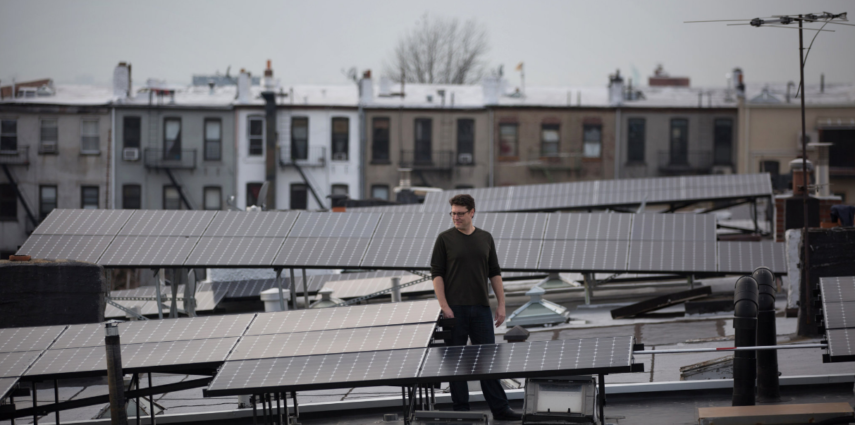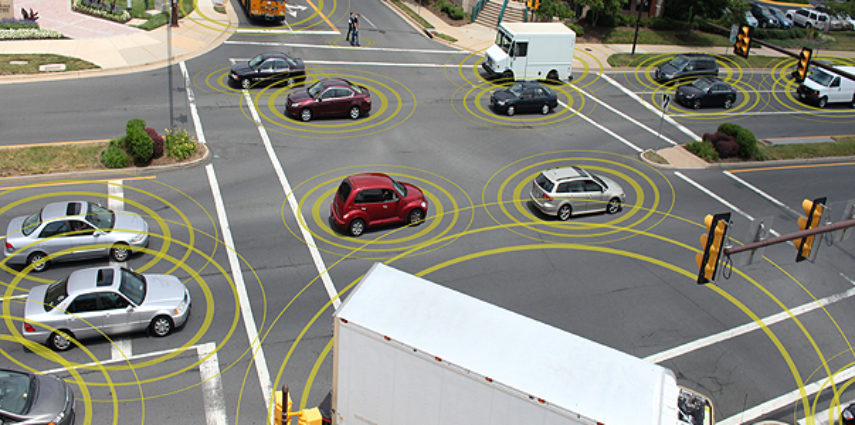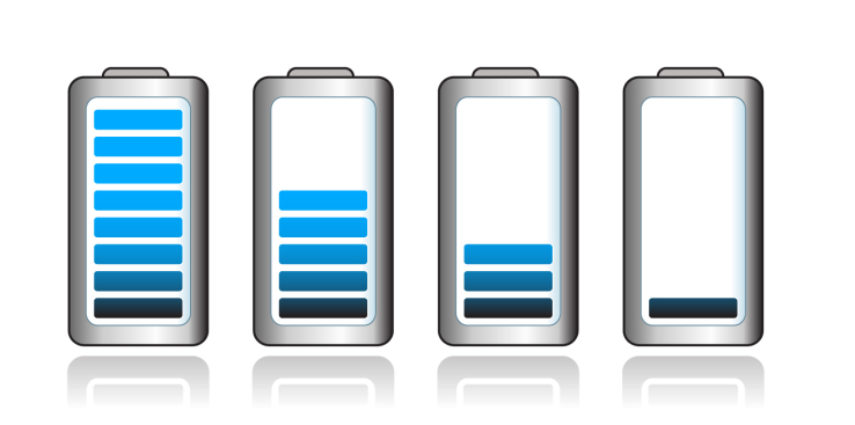Garry has long been a go-to resource for many topics sounding the future of energy, fuel cells and solar. The New York Times new he was the right person to speak with when they decide to dive into the peer to peer “Solar Experiment” that is the Brooklyn Microgrid.
Infrastructure
Transportation piece published by The Real Estate Council of Austin, Texas
Here’s an excerpt from the reca.org article. “Austin resident recently approved a $720 million transportation bond that is, among other strategies, designed to improve traffic flow around several ‘smart corridors’. The physical design improvements aim to improve flow for both transit and private vehicles along key routes.”
Real Estate Council of Austin Publishes two part series on transportation featuring Garry Golden
The two-part series focuses on getting the audience to take a look into the future of what transportation might be like in Austin, Texas by “Tapping Your Inner Futurist”. You can take a look a part one and part two of the series at the reca.org site.
Tech Crunch Asks Garry: Will Embedded Fuel Cells Run The World?
Here’s an excerpt from the piece. “People love their smartphones but hate poor battery life. We love having access to the world’s information at our fingertips but tire of the need to constantly plug into the world’s electricity grid. The recharging model of batteries fails us — the marketplace is ready for a new approach to portable power. ” Read More
Garry talks to Fast Company about the future of MoMa, Museums and Culture
When the Moma decided on a redesign just 3 years ago now it sent the art, culture and architectural worlds into a tizzy. In an effort to better understand what we coming Fast Company tapped Garry to get a handle on what was to come.
Thank you Intelligent Energy – Why Putting Fuel Cells Inside Devices is a Big Deal
Scenario to Explore: Micro Fuel cells finally hit mainstream news cycle in 2022 when everyone at Burning Man sings their praises as reliable sources of electricity. By 2025 the industry debate over recharging (battery) vs refueling (fuel cells) for electronic devices shifts tone as global manufacturers cut the cord from the grid and embed micro fuel cells insider everything from laptops to floor lamps. Even in 2025 most people are still unclear how fuel cells work and how they are different but batteries but they celebrate cutting the cord and embrace the design, performance and convenience of refueling devices.
The Future of Crypto DApps and the Ethereum Project Community
Possibility to Explore
Crypto ÐApps Go From Fringe to Foundation by 2025
By 2025, the Ethereum network will find mainstream success as ÐApps (decentralized applications) emerge from individuals, businesses, civic institutions and governments eager to develop products and services based on a radical mix of trust, transparency and automation. Within a decade Ethereum – and the idea of cryptographically secured programmatic decentralized applications will likely move from today’s fringe to a foundation of social innovation. Read more
Energy Revolution Ahead? Utilities may soon favor Fuel Cells over Solar
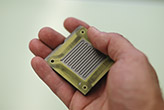 Solar power receives more media attention and seems to capture our imagination around the ‘future of energy’, but fuel cell energy appliances represent a more compelling distributed power strategy for utilities looking to develop solutions for commercial customers who demand more resiliency, always-on power and a reduced carbon footprint.
Solar power receives more media attention and seems to capture our imagination around the ‘future of energy’, but fuel cell energy appliances represent a more compelling distributed power strategy for utilities looking to develop solutions for commercial customers who demand more resiliency, always-on power and a reduced carbon footprint.
Today we sense high expectations for the future of solar, and either complete confusion, indifference or disdain to the future of fuel cells. Fuel cells are often over-sold by evangelists or dismissed by skeptics but within a decade, energy pundits may speak of fuel cells as being a more radical (and practical) energy innovation platform than solar energy. With fuel cells you can imagine putting a power plant in every hand, home or community.
Micro Fuel Cell Companies to Watch
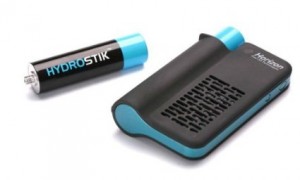 Fuel cells are solid-state power plants. They convert chemical energy (fuels such as hydrogen, natural gas, propane, methanol) into electrical energy in a single electrochemical reaction.
Fuel cells are solid-state power plants. They convert chemical energy (fuels such as hydrogen, natural gas, propane, methanol) into electrical energy in a single electrochemical reaction.
Fuel cells can be scaled in design and manufacturing from the size of a thumbnail to tractor trailer-sized units. In 2014, the most viable market for fuel cells remains stationary distributed power. Beginning in 2015, major automakers such as Toyota, Honda and Hyundai will sell fuel cell electric vehicles. Both stationary and vehicle applications are in early stages of growth.
Micro Fuel Cells: Vision of Personal Power
The more interesting fuel cell application is even more nascent in its market maturity. Micro fuel cells are probably the most overlooked or easily dismissed energy technology on the longer term horizon of energy market transitions beyond 2025. Yet there is nothing more disruptive then the use of portable fuels and micro fuel cells to address issues of energy access (energy poverty). The lofty vision is to reinvent the energy ladder with market solutions that put clean hydrogen-rich fuels and micro fuel cells into the hands of every person on the planet.
Let’s look at the potential paths ahead for this small scale approach to portable fuels and energy conversion.
Micro fuel cell applications by size and application:
- Thumb-sized – a fuel-fed mini ‘power plant’ embedded within an electronic device (e.g. phones, tablets, industrial-grade devices)
- Hand held – a fuel-fed recharger for batteries inside portable devices; portable auxillary for industrial equipment
- Small bread box sized – a fuel-fed auxillary power unit (APU) for vehicles, military, recreational camping, distributed or remote infrastructure
Near Term Market: Premium Portable Power (2014-2020)
The market-ready applications for micro fuel cells are for premium forms of energy acess that frees us from connections to electrical sockets and the grid. People who need reliable energy while at music festivals, camping trips, military excursions. The market demand remains soft but likely to follow the same cost-curve and adoption model of previous disruptive technology platforms.
Companies such as Brunton, Intelligent Energy, MyFC and Neah Power systems sell hydrogen cartridges (usually solid state H2) and micro fuel cell units that can give you power on the go. The cost of ‘refueling’ a portable device ranges across product lines but it a premium to no or low cost of plugging into a wall socket. If you take a longer view on solid state hydrogen storage (e.g. MOFs) and increased output from fuel cell membranes this refueling model starts to look disruptive. In the short term it is a premium portable power solution for recharging batteries within our electronic gadgets.
Mid-term Market: Embedding Fuel Cells – Refueling beats Recharging (2020-2025)
What if we could embed fuel cells within electronic devices? ‘Better batteries’ can only take us so far with portable devices that continue to consume more power. Integrating micro fuel cells within portable electronics would provide clear market signals to manufacturers and portable fuel providers. In this scenario fuel cells replace batteries as the primary source of electricity within portable electronics. We would ‘refuel’ our devices rather than ‘recharge’ them. You could purchase portable fuel packets in any retail setting. Never have to worry about finding a socket to plug into – simply refuel with a new cartridge.
Long-term Disruptive Vision: Personal Power for the Entire Planet – (2025-50)
The long term disruptive vision of micro fuel cells is to reinvent the Energy Ladder by placing clean hydrogen-rich fuels at the bottom of the rung. In this scenario individuals around the world could purchase ‘packets’ of fuels (solid H2; liquid H2 rich fuels) and micro-fuel cells (the power plant) in typical retail setting. In this future we could produce small micro power systems that are sold across retail channels and provide a ‘leapfrog’ option for billions of people seeking an alternative to the ‘grid’.
To arrive at this scenario we would need to see both incremental and breakthrough performance gains. Solid state hydrogen storage via adsorption (not hydrides) would have to deliver on energy and power density. Fuel cell membranes would need to leverage nano-structured materials design for non-precious metal catalysts and improved reduction side reactions that increase electricity output. Even if these capabilities did not arrive until 2030 or 2040 it is still in time to meet the changing needs of a planet that will have doubled its energy demands from 2014.
So that is most simple roadmap for micro fuel cells. Who are the companies that could take us there?
Micro Fuel cell Companies – without commentary and in no particular order!
- Intelligent Energy UPP
- MyFC PowerTrekk
- Brunton
- Horizon Fuel Cells
- Nectar Power
- Neah Power
- Protonex
- MTI Mobion
- Point Source Power – novel ‘base of pyramid’ applications
- Oorja – direct methanol approach
- Trulite
- PowerCell – Sweden
- TMI – contract manufactur of industrial-military grade
*I have not include bio micro fuel cells.
Haters, will hate 😉
If you follow the energy ‘cleantech’ blogger world conversations there is a lot of skepticism over fuel cells and hydrogen. I will not go into the long list of reasons why skepticism is warranted yet short-sighted and lacking in understanding of long-term dynamics of energy market transitions. Nothing can change the energy industry overnight!
The micro fuel cell market is in a nascent stage so shake-outs, failures, and breakouts are all part of this phase of development.
There is no need to write-off or be dismissive about hydrogen or fuel cells.
The energy story is a marathon not a sprint. In addition to talking about the ‘future of solar in 2020’ we need to be able to invest in alternative visions that go beyond 2025 and can carry us through the century. Portable fuels and power systems is critical to the foundation of a 21st century energy marketplace.
But if you are a doubter and keeping score here is a list of companies who have failed, folded or been absorbed:
- Jadoo
- Voller Energy
- Medis Technologies
Why continue to dream of fuel cells when solar costs are dropping?
Solar rooftop panels can only take the world so far. Solar requires Solar’s business model is challenged in a world where people need portable fuels that can satisfy high energy consumption. Solar rooftop is a structural solution to energy demands and requires significant investment in installation and maintenance. Selling portable fuels and micro fuel cells can use existing retail store channels.
Videos – Micro fuel cells
Brunton – direct link
Demonstration
Outdoor Youtube Show Overview
Garry Golden Keynote City of Ontario 2014
A recent keynote delivered for the City of Ontario’s State of the City event in March 2014!

